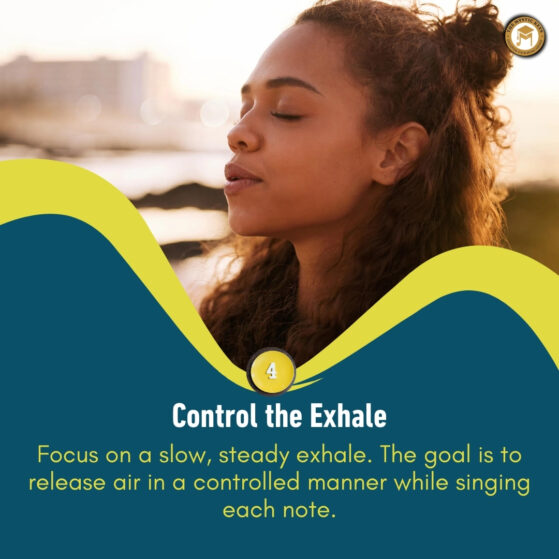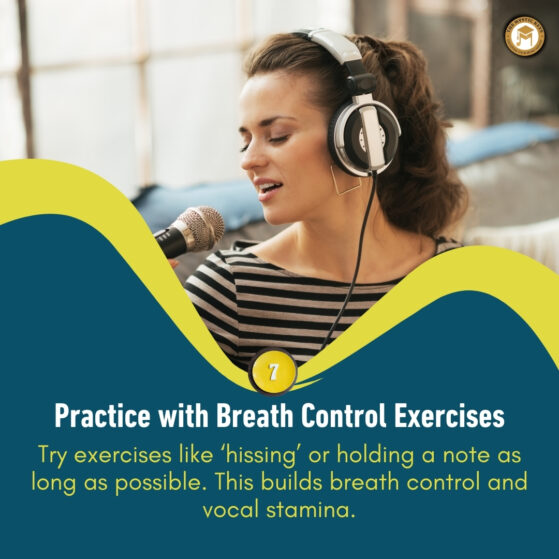Breath Control | All You Need to Know
Breath control is a fundamental aspect of singing that can make or break a performance. Whether you’re a seasoned vocalist or just starting, understanding how to manage your breath can enhance your vocal abilities and maintain your vocal health. In this blog, we’ll explore the essential techniques and exercises that will help you master breath control for singing.
Why Breath Control Matters in Singing
Breath control is crucial for several reasons. First and foremost, it allows you to sing longer phrases without gasping for air. When you can control your breath, you can sustain notes longer, which is essential for emotional delivery in your performances. Furthermore, effective breath control helps you reach higher notes without straining your voice, allowing for greater vocal range and flexibility. Lastly, maintaining proper breath support is key to preserving vocal health, preventing strain and injury.

Diaphragmatic Breathing Basics
The foundation of breath control lies in diaphragmatic breathing. Unlike chest breathing, which is shallow and inefficient, diaphragmatic breathing involves engaging your diaphragm, a dome-shaped muscle beneath your lungs. To breathe from your diaphragm, place one hand on your chest and the other on your abdomen. As you inhale, focus on expanding your belly rather than lifting your chest. This technique allows for deeper, more controlled breaths that provide the support you need while singing.

Inhale Through Your Nose
Inhaling through your nose is a vital practice for singers. When you take slow, deep breaths through your nose, you filter and warm the air before it enters your lungs. This preparation is essential for efficient breathing and can enhance the quality of your sound. To practice, take a moment to inhale through your nose, feeling your abdomen expand fully before exhaling. This habit can help create a calm and focused breathing pattern that translates well to your singing.

Control the Exhale
Equally important as the inhale is the exhale. When singing, aim for a slow, steady exhale. This control allows you to release air in a measured manner, giving you the ability to maintain pitch and dynamics while performing. Practice exhaling on a hiss or a sustained note, focusing on keeping the airflow consistent and relaxed. Over time, you’ll find that this control improves your overall vocal performance.

Use Short, Quick Breaths Between Phrases
Mastering the art of “catch breaths” can significantly enhance your singing. Catch breaths are quick, short inhales taken between phrases to maintain a steady airflow. These breaths should be discreet and well-timed, allowing you to continue singing without noticeable interruptions. To practice, choose a song you know well and identify places where you can take quick breaths without disrupting the flow.

Engage Your Core Muscles
Your core muscles play a vital role in managing airflow while singing. Engaging your abdominal muscles helps provide stability and support, particularly when sustaining notes. To practice this, try placing your hand on your abdomen as you sing. You should feel your abdominal muscles activate as you exhale. Developing strength in your core will not only improve breath control but also enhance your overall singing technique.

Practice with Breath Control Exercises
Incorporating specific exercises into your practice routine can significantly improve your breath control. One effective exercise is the ‘hissing’ exercise: take a deep diaphragmatic breath and then exhale slowly while producing a hissing sound. Focus on maintaining a steady airflow and extending the duration of the hiss. Another great exercise is to hold a note for as long as possible, gradually increasing your time as your control improves. These exercises will help build your vocal stamina and breath management skills.

Relax the Shoulders and Neck
Tension in your upper body can hinder your airflow and vocal quality. To achieve a smooth, supported sound, it’s essential to keep your shoulders and neck relaxed. Incorporate stretching and relaxation techniques into your warm-up routine, focusing on releasing tension. As you sing, maintain a relaxed posture and allow your breath to flow freely. This will contribute to a more open and resonant sound.

Conclusion
Mastering breath control is a journey that requires patience and practice. By incorporating these techniques into your singing routine, you can enhance your vocal performance, achieve greater vocal health, and express your artistry more effectively. Remember, breath control is not just about managing air—it’s about creating a supportive foundation for your voice to flourish. So take a deep breath, engage your diaphragm, and let your voice soar!








